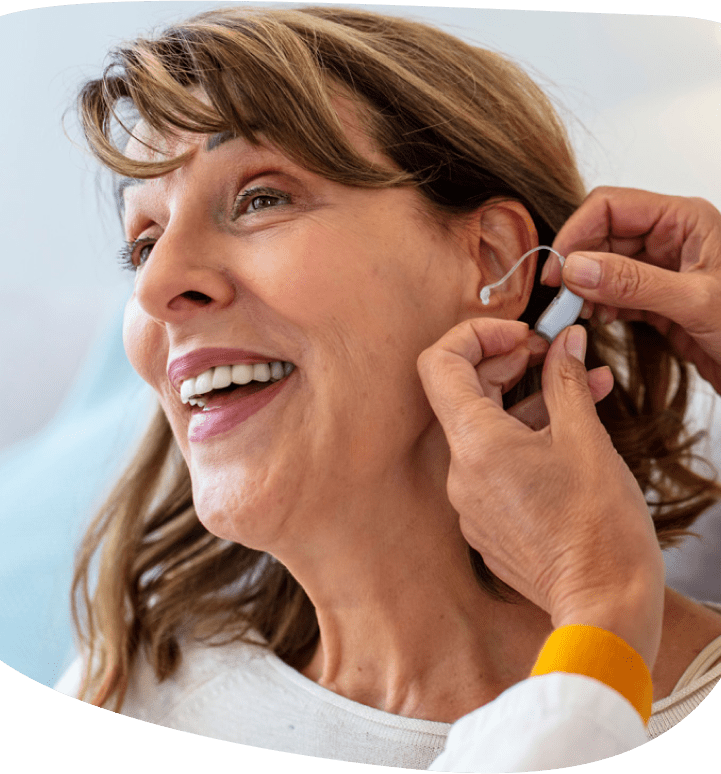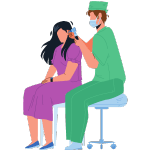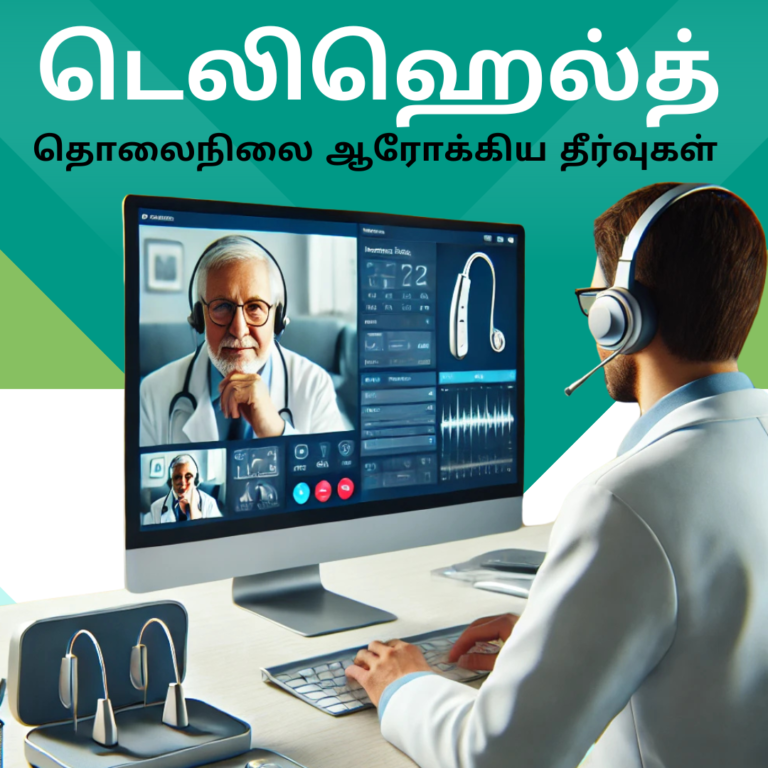Introduction
Hey there! If you’re reading this, chances are you’ve just gotten a new pair of new hearing aid or are about to get them. Congratulations! This is a significant step toward better hearing and an improved quality of life. However, I know from personal experience that adapting to new hearing aids can be a bit of a challenge. It can feel overwhelming at first, but trust me, it’s worth every bit of effort. I’ve been wearing new hearing aid for over a decade, and I’ve learned a few tricks along the way. Let’s dive into some essential tips for getting used to your new hearing aids and making the transition as smooth as possible.

What Can I Expect in the First Few Weeks?
Initial Adjustment Period
When you first start wearing your new hearing aid, the world can sound very different. Some people describe it as suddenly being thrust into a noisy, bustling city after living in a quiet countryside. Sounds you haven’t heard in years, like the rustling of leaves, the hum of your refrigerator, or even your footsteps, can seem overwhelmingly loud. This is completely normal. Your brain needs time to adjust to these new sounds and learn to filter out the unnecessary noise.
In my first week with new hearing aid, I vividly remember being startled by the sound of my own breathing and chewing. It felt like everything was amplified! But with a bit of patience and persistence, these sounds began to blend into the background as my brain adjusted.
New Hearing Aid Familiarization
Getting to Know Your Device
One of the first steps in getting used to new hearing aids is familiarizing yourself with the device itself. Modern hearing aids come with various features and settings that can greatly enhance your listening experience. Take some time to read the user manual, watch instructional videos, or ask your audiologist for a hands-on tutorial.
For instance, my new hearing aid have a feature that allows me to connect them to my smartphone. This means I can stream phone calls, music, and even directions from my GPS directly to my new hearing aid. Initially, it felt like a lot to learn, but once I got the hang of it, this feature became incredibly useful.
Getting Used To Hearing Aids
The Adaptation Process
Getting used to new hearing aid is not an overnight process. It requires patience and persistence. Your brain has to re-learn how to process sounds, which can take a few weeks to several months. During this period, you might experience moments of frustration, but remember that it’s all part of the journey.
A useful tip is to start by wearing your new hearing aid for just a few hours each day, gradually increasing the duration as you become more comfortable. In the beginning, I could only manage a couple of hours before feeling overwhelmed. But day by day, my tolerance improved, and soon I was wearing them all day without a second thought.
What Can I Expect During the Familiarization Phase?
Sensory Adjustments
The familiarization phase is all about sensory adjustments. Initially, you might find that certain sounds are too loud or sharp. This is because your brain is not used to processing these sounds at their true volume. Over time, as your brain adjusts, these sounds will become more natural.
You may also notice that your voice sounds different. This is known as the occlusion effect, and it happens because the new hearing aid are blocking the ear canal, causing your voice to sound louder inside your head. This sensation usually diminishes as you get used to the new hearing aid.
During this phase, it’s crucial to have regular follow-up appointments with your audiologist. They can make adjustments to the settings of your new hearing aid to ensure you’re getting the best possible experience. I had to go back a couple of times in the first month to fine-tune my new hearing aid, and each visit made a noticeable difference.
Adjusting to new hearing aids requires patience and time.
Patience is Key
Patience is indeed a virtue when it comes to getting used to new hearing aids. It’s essential to give yourself time to adapt and not rush the process. Some people adjust in a few weeks, while others may take a few months.
I remember feeling a bit disheartened when I didn’t adjust as quickly as I had hoped. But with some encouragement from my audiologist and support from my family, I kept at it. Looking back, I’m so glad I did because the benefits of wearing new hearing aid far outweigh the initial challenges.

Familiarize Yourself With How To Handle Your Hearing Aid
Handling and Maintenance
Learning how to handle and care for your new hearing aid is crucial for their longevity and performance. Hearing aids are delicate devices, and improper handling can lead to damage or malfunction.
Practical Tips on Handling
Always handle your latest hearing aids with clean, dry hands. When inserting or removing them, do it over a soft surface like a towel to prevent damage in case they slip. Store them in a safe, dry place when not in use, preferably in a dedicated case.
Cleaning Your Hearing Aids
Regular cleaning is essential to keep your latest hearing aids functioning properly. Use a soft, dry cloth to wipe them down daily. Most latest hearing aids come with a small brush or wax pick to clean the microphone ports and other small parts. Avoid using water or cleaning solutions directly on the device as it can cause damage.
I had a mishap once when I tried to clean my latest hearing aids with a damp cloth. They stopped working, and I had to take them in for repair. Since then, I’ve been much more careful and stick to dry cleaning methods.
Adjusting to New Hearing Aids at Home
Creating a Comfortable Environment
Adjusting to new hearing aids in the comfort of your home can make the process smoother. Your home is a familiar environment, and starting there can help you feel more at ease.
Simple Exercises and Activities
Begin by listening to familiar sounds around your house. This could be the ticking of a clock, the sound of water running, or birds chirping outside. Gradually increase the complexity of the sounds you listen to. For example, you can start by listening to the radio or watching TV at a low volume.
Daily Routine Integration
Integrate wearing your latest hearing aids into your daily routine. Wear them while doing household chores, reading, or even while sitting quietly. The goal is to make wearing them a natural part of your daily life.
Our Recent Blogs
Gradually Using Technical Devices
Integrating Technology
Modern latest hearing aids can connect to various technical devices, enhancing your listening experience. However, it’s important to introduce these devices gradually to avoid feeling overwhelmed.
Connecting to Phones and TVs
Start by connecting your latest hearing aids to your smartphone. Many hearing aids have Bluetooth capabilities, allowing you to stream audio directly. Practice making phone calls and listening to music. Then, move on to connecting to your TV. This can make watching your favorite shows much more enjoyable.
Tips for Improving the Experience
Adjust the volume settings on these devices to a comfortable level. It might take some trial and error to find the perfect balance, but once you do, it will make a significant difference. I found that connecting my latest hearing aids to my TV and phone was a game-changer, making media consumption much more enjoyable.
Take the Conversation Challenge
Practice Makes Perfect
Engaging in conversations is an excellent way to get used to your new hearing aids. It helps improve your active listening skills and fine-tune the settings of your devices.
Practical Conversation Exercises
Start with one-on-one conversations in a quiet environment. As you become more comfortable, introduce background noise gradually. This could be having a conversation while the TV is on or in a bustling café. These exercises help train your brain to focus on important sounds and filter out background noise.
Using Conversations for Adjustment
Encourage your conversation partners to speak clearly and at a moderate pace. This helps you understand speech better and makes it easier for your brain to process the sounds. Over time, your brain will adapt, and understanding speech will become more natural.
Utilize conversations to assist in adapting to your hearing aid
Active Listening Strategies
Conversations are a great tool to help you adjust to your hearing aids. Active listening strategies can make these conversations more effective and enjoyable.
Strategies to Improve Active Listening
This not only helps you lip-read but also keeps you engaged in the conversation. Ask questions or paraphrase what you’ve heard to ensure you’ve understood correctly. This not only clarifies the conversation but also keeps you actively involved.
Fine-Tuning Hearing Aid Settings
As you engage in more conversations, you’ll notice certain settings that need adjustment. Take note of these and discuss them with your audiologist during follow-up visits. For example, you might need the volume adjusted or a particular frequency enhanced to better understand speech.
The Ultimate Challenge: Adjusting to New Hearing Aids in Noisy Settings
Overcoming Noise Challenges
Adapting to new hearing aids in noisy environments is often the final step in the adjustment process. It can be challenging, but with the right strategies, you can overcome it.
Tips for Adapting to Noisy Environments
Start by exposing yourself to moderate noise levels. This could be a busy café or a family gathering. Gradually increase the noise level exposure. Practice focusing on specific sounds, like a friend’s voice, in these settings.
Step-by-Step Guide
Begin with Moderate Noise Levels: Start in environments with moderate noise levels and gradually increase the complexity.
Use Directional Microphones: Many hearing aids come with directional microphones. Activate this feature to focus on sounds coming from in front of you.
Take Breaks: If the noise becomes overwhelming, take short breaks to give your brain a rest.
I remember attending my first large family gathering with my new hearing aids. Initially, the noise was overwhelming, but by focusing on one conversation at a time and taking short breaks, I managed to enjoy the event.
Better Hearing Can Be an Unfamiliar Experience
Embracing the Change
Better hearing can be an unfamiliar and sometimes overwhelming experience. It’s important to embrace this change and understand that it’s a positive step toward improving your quality of life.
Discussing the Emotional Aspect
Hearing sounds you haven’t heard in years can evoke strong emotions. It’s normal to feel a mix of excitement and frustration. Acknowledge these emotions and give yourself time to adjust. Talk to family and friends about your experiences—they can provide support and understanding.
Tips for Embracing the New Experience
Focus on the positives. Enjoy the sounds of nature, the laughter of loved ones, and the clarity of conversations. Keep reminding yourself of the benefits and the improved quality of life that better hearing brings.

How Can I Best Adjust to a New Hearing Aid?
Personalized Adjustment Strategies
Every individual’s experience with hearing aids is unique. Personalized adjustment strategies can make the transition smoother.
Tailoring the Adjustment Process
Work closely with your audiologist to tailor the adjustment process to your needs. This includes customizing the settings of your hearing aids, scheduling regular follow-ups, and addressing any specific challenges you face.
Long-Term Adaptation
Even after the initial adjustment period, continue to adapt and fine-tune your hearing aids. As you encounter different environments and situations, you might need further adjustments. Stay proactive and communicate with your audiologist regularly.
How Can I Help the People Around Me?
Communicating Your Needs
Helping the people around you understand your hearing aids and your needs is crucial for a smooth adjustment process.
Educating Family and Friends
Take some time to educate your family and friends about your hearing aids. Explain how they work and what they can do to help. This might include speaking clearly, facing you when talking, and reducing background noise during conversations.
Seeking Support
Whether it’s reminding someone to speak up or asking for a quiet space to talk, communicating your needs can make a significant difference.

How Can I Train My Hearing?
Hearing Exercises
Training your hearing can significantly improve your experience with hearing aids. Regular exercises can enhance your auditory skills and make the adjustment process smoother.
Exercises and Activities
- Listening to Audio Books: This helps improve speech recognition and auditory processing.
- Sound Identification: Practice identifying different sounds in your environment. This can be a fun and engaging way to train your hearing.
- Conversation Practice: Engage in conversations with different people in various settings. This helps your brain adapt to different speech patterns and environments.
Long-Term Strategies
Make hearing exercises a regular part of your routine. Over time, these exercises will improve your hearing skills and enhance your overall experience with hearing aids.
Conclusion
Adjusting to new hearing aids can be a journey filled with challenges, but it’s also one of the most rewarding experiences. By following these tips and strategies, you can ease into daily wear and enjoy the many benefits that come with improved hearing. Remember to be patient, stay persistent, and seek support from your audiologist and loved ones. Better hearing is within your reach, and with a little time and effort, you’ll be fully adjusted and reaping the rewards. Happy hearing!

Home Visit Available
Flexible Schedule

Online Consultation
24/7 Customer support

Free Hearing Test
Take-home hearing aid trial for 3-days



